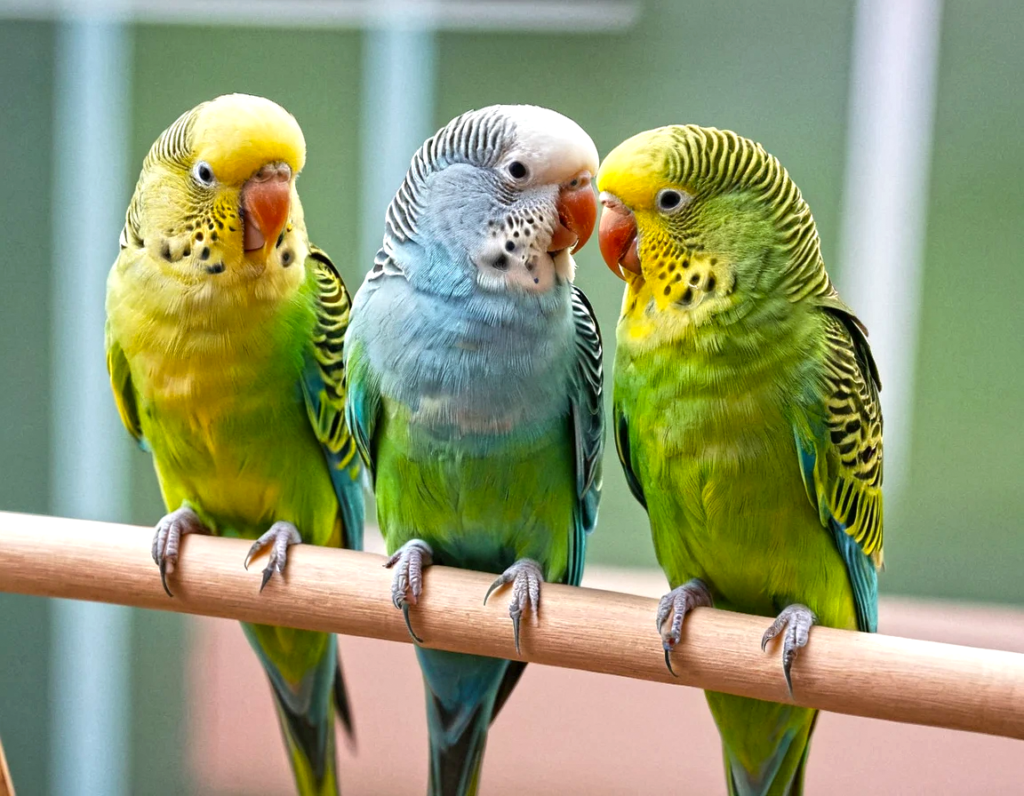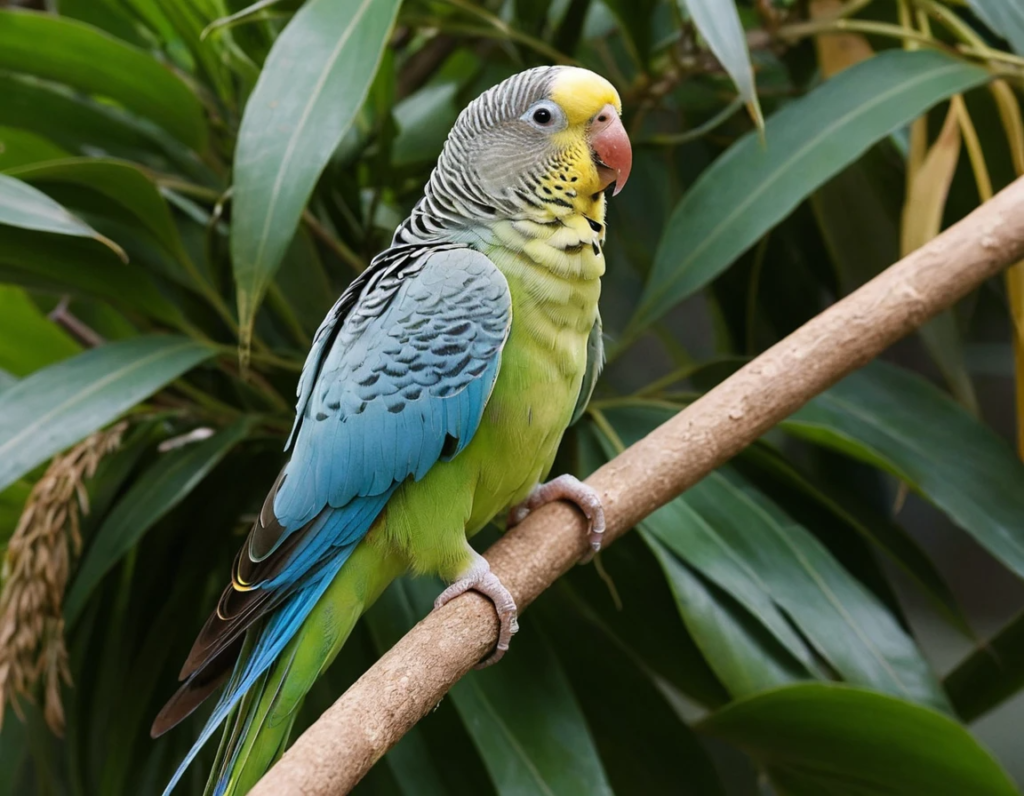
If you’ve ever found yourself staring at a pet store sign that says “Parakeets for Sale” and then another one saying “Budgies Available,” you’re not alone in wondering—Wait… aren’t those the same bird? Let’s clear up the great parakeet vs. budgie mystery once and for all.
The Name Game: Budgie or Parakeet?
Here’s the deal—every budgie is a parakeet, but not every parakeet is a budgie. Confused? Think of it like this: all poodles are dogs, but not all dogs are poodles. “Parakeet” is a general term used for a group of small, long-tailed parrots, while “budgie” (short for budgerigar) refers to a specific species within that group.
To make things even more interesting, in the U.S., people usually call them parakeets, while in the U.K. and Australia, they’re known as budgies. So, if an American and an Aussie walk into a pet store, they might end up talking about the same bird but think they’re different ones.
Appearance: Do They Look Any Different?
When people say “parakeet,” they’re typically talking about the budgie, which is the most common type. Budgies are small, about 7 inches long, with green and yellow feathers in the wild. Pet budgies, however, come in a rainbow of colors, including blue, white, and even purple!
Other types of parakeets, like the Indian Ringneck or the Monk Parakeet, look quite different. They’re bigger, have different color patterns, and sometimes even sport fancy rings around their necks. But if you’re discussing parakeet vs. budgie, you’re most likely comparing budgies to the general parakeet term.
Personality: Are Budgies and Parakeets the Same in Behaviour?
Budgies, like other parakeets, are social, playful, and ridiculously curious. They love to chirp, explore, and, if trained properly, even talk! Yes, budgies can learn words, and some have been recorded saying over 1,000 of them. Not bad for a tiny bird, right?
Compared to some larger parakeets, budgies tend to be easier to train and a bit more independent. They don’t demand as much attention as, say, an Alexandrine Parakeet, but they still thrive on social interaction. If you’re thinking of getting one, consider having a chat with them—just don’t be surprised if they start talking back!
Care: Is There a Difference in Their Needs?
If we’re talking strictly about parakeet vs. budgie in terms of care, budgies tend to be the easiest to manage. Their diet consists of seeds, pellets, fruits, and veggies. They need a cage with plenty of room, toys for entertainment, and regular out-of-cage time to stretch their tiny wings.
Other parakeet species might require larger cages, more specific diets, and additional social interaction. So, if you’re looking for a low-maintenance feathered friend, a budgie is a great choice!
So, Which One Should You Get?
If you’re looking for a small, fun, and friendly bird that won’t take over your entire living room, a budgie (a.k.a. parakeet) is the way to go. They’re affordable, relatively easy to care for, and can be quite entertaining.
But if you’re considering other types of parakeets, make sure you research their specific needs. Some can be much larger, louder, and more demanding than your average budgie.
Final Thoughts
At the end of the day, the parakeet vs. budgie debate is more about terminology than anything else. If you walk into a pet store in the U.S., you’ll likely see “parakeets” for sale—but guess what? Those are budgies! Now, the next time someone asks you the difference, you can confidently say, “They’re the same bird… just with a case of mistaken identity.”
So, whether you call them budgies, parakeets, or “that tiny bird that won’t stop chirping,” one thing’s for sure—they make amazing pets!
Is a Budgie the Same as a Parakeet? Explained!
If you’ve ever heard someone call their pet bird a parakeet while another insists it’s a budgie, you might have wondered—Are they talking about the same bird? Let’s put an end to the parakeet vs. budgie debate once and for all.
The Truth About Budgies and Parakeets
The simple answer? Yes, a budgie is a parakeet! But not all parakeets are budgies. Think of it like this: all squares are rectangles, but not all rectangles are squares. “Parakeet” is a broad term used for small, long-tailed parrots, while “budgerigar” (or budgie for short) refers to one specific species within that group.
So, if someone in the U.S. says they have a parakeet, they probably have a budgie. If someone in the U.K. or Australia says they have a budgie… well, they still have a budgie.
What Do They Look Like?
When discussing parakeet vs. budgie, we’re usually talking about the small, brightly colored bird commonly found in pet stores. Budgies are about 7 inches long and come in various colors, including green, yellow, blue, and even purple.
Other types of parakeets, like the Indian Ringneck or Monk Parakeet, can look quite different. Some are much larger, and some even have impressive neck rings. But if you’re seeing a small, chirpy bird in a pet store labeled “parakeet,” it’s almost certainly a budgie.
Personality Differences: Are They the Same?
Since budgies are a type of parakeet, their personalities match up. Budgies are social, playful, and love to chirp their little hearts out. They can also be trained to sit on your finger, play games, and even talk. Yes, some budgies can build a vocabulary of hundreds of words!
Compared to larger parakeets, budgies are usually easier to care for and don’t demand as much attention. But don’t let their small size fool you—these birds have big personalities!
Care and Maintenance: Any Major Differences?
If we’re comparing parakeet vs. budgie in terms of care, budgies tend to be one of the easiest pet birds to look after. They need a nutritious diet of pellets, seeds, fruits, and vegetables, a spacious cage, and plenty of toys to keep them entertained.
Larger parakeets may require a bigger cage, a more varied diet, and additional social interaction. If you’re looking for a low-maintenance but entertaining pet, a budgie is a great option.
So, Which Should You Get?
If you want a small, friendly, and intelligent pet bird, a budgie is an excellent choice. They’re affordable, relatively easy to care for, and highly interactive.
However, if you’re interested in exploring other types of parakeets, make sure to do your research—some species require a bit more work and space.
Final Thoughts
The parakeet vs. budgie question is really just a matter of terminology. In the U.S., people use “parakeet” to refer to budgies, while in other countries, “budgie” is the more common term.
So, the next time someone asks if a budgie and a parakeet are the same, you can confidently say, “Yes! A budgie is a parakeet, but not all parakeets are budgies.” And just like that, you’ll sound like a bird expert!
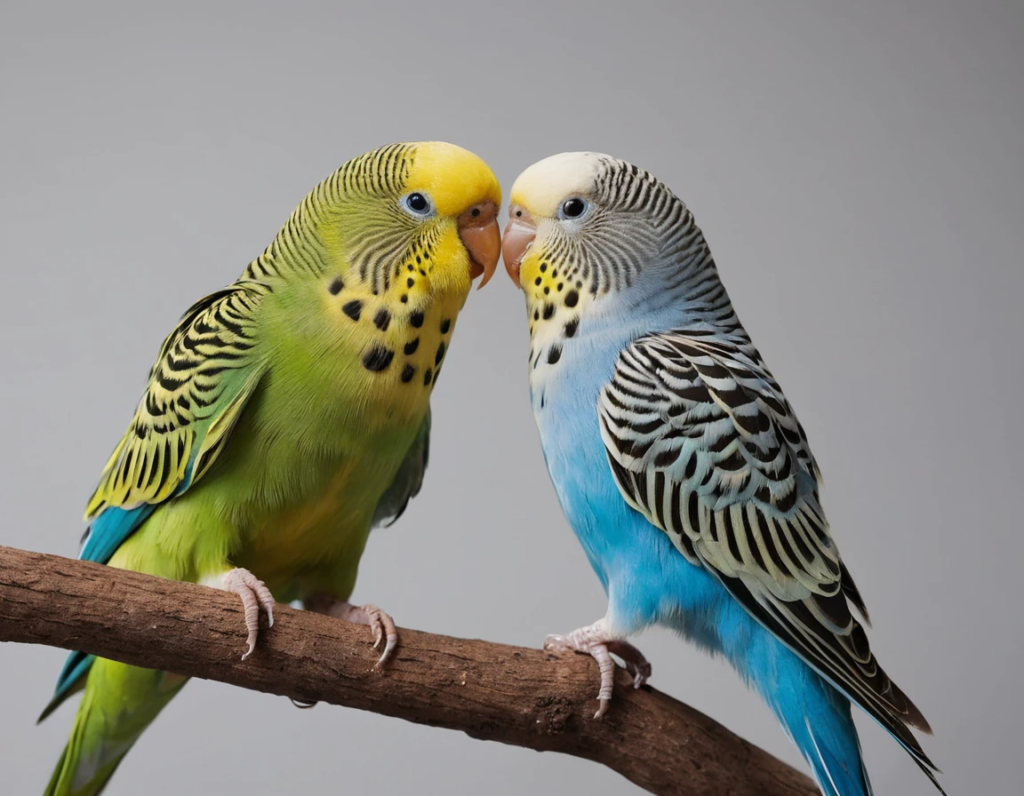
Parakeet vs. Budgie: Which One Should You Get as a Pet?
So, you’ve decided to bring home a feathery friend, but now you’re stuck in the great parakeet vs. budgie debate. You’ve heard both terms, seen both birds in pet stores, and now you’re wondering—Are they different? And which one is the right pet for me? Don’t worry, we’ve got you covered!
Parakeet vs. Budgie: Are They Actually Different?
Let’s get one thing straight—a budgie is a parakeet, but not all parakeets are budgies. It’s like saying, “All squares are rectangles, but not all rectangles are squares.” In the U.S., the term parakeet is commonly used for budgies, while in other countries, especially in the U.K. and Australia, they’re called budgerigars or simply budgies.
But there are also other types of parakeets, like the Indian Ringneck, Monk Parakeet, and Alexandrine Parakeet, which are bigger and have different care needs. So, if you’re comparing parakeet vs. budgie, you’re most likely talking about budgies vs. other parakeet species.
Which One Makes a Better Pet?
If you’re a first-time bird owner, a budgie is your best bet. Here’s why:
1. Size & Space Requirements
Budgies are small and compact, about 7 inches long. That means they don’t need a massive cage, unlike some larger parakeets that require a mini bird mansion. A budgie’s cage should be spacious enough for them to spread their wings and hop around, but it won’t take over your entire living room.
2. Personality & Training
Budgies are social butterflies (or should we say, social parakeets?). They love human interaction and can even learn to talk! Some budgies have been recorded mimicking hundreds of words. Larger parakeets can also be trained, but they might require more patience and experience.
3. Noise Levels
Let’s be real—birds love to chat. But if you don’t want your neighbors filing noise complaints, a budgie is the way to go. They chirp and chatter, but they’re not as loud as some bigger parakeets, like the Indian Ringneck, which can belt out sounds that could rival a car alarm.
4. Care & Maintenance
When comparing parakeet vs. budgie in terms of care, budgies win for being low maintenance. They eat a diet of seeds, pellets, fresh fruits, and veggies. Larger parakeets might require more specialized diets and extra enrichment to keep them happy.
5. Cost & Availability
Budgies are one of the most affordable pet birds. You can find them at most pet stores or through reputable breeders. Larger parakeets can be more expensive, not just to buy but also to care for in the long run.
So, Which One Should You Get?
If you’re looking for a friendly, entertaining, and easy-to-care-for pet, a budgie is your best choice. They’re great for beginners, fun to train, and won’t break the bank.
However, if you’re experienced with birds and want something bigger and more challenging, another type of parakeet might be for you. Just be prepared for more noise, more space requirements, and possibly more attitude!
Final Thoughts
At the end of the day, the parakeet vs. budgie debate is more about terminology than anything else. If you walk into a U.S. pet store and ask for a parakeet, you’ll likely be handed a budgie. So, no matter which name you prefer, what really matters is finding the right bird that fits your lifestyle.
Now, are you ready to welcome a little feathered chatterbox into your home? Just be prepared for endless chirps—and maybe even a few unexpected words if you leave the TV on too much!
Budgie vs. Parakeet: Name Differences and What They Really Mean
If you’ve ever walked into a pet store and heard one person ask for a budgie while another asks for a parakeet, you might wonder—are they talking about the same bird? The parakeet vs. budgie debate is one of the most common questions among bird lovers, and today, we’re finally settling it!
Parakeet vs. Budgie: What’s the Real Difference?
The short answer? There is no difference! A budgie is a parakeet, but not all parakeets are budgies. Think of it like this: All golden retrievers are dogs, but not all dogs are golden retrievers. “Parakeet” is a general term that describes small, long-tailed parrots, while “budgerigar” (or budgie) refers specifically to the little green-and-yellow bird we all know and love.
Why the Name Confusion?
The term parakeet vs. budgie really comes down to regional differences. In the United States, people commonly call them parakeets. In the UK, Australia, and many other parts of the world, they are known as budgerigars, or simply budgies.
So, if you hear someone say “parakeet,” they’re probably American. If they say “budgie,” they might be from the UK—or just someone who likes the sound of the word better (let’s be honest, “budgie” is way more fun to say).
Do Budgies and Other Parakeets Have Differences?
Yes! Budgies are just one type of parakeet. There are many other parakeet species, including:
- Indian Ringneck Parakeet – Known for their talking abilities and a slight attitude problem.
- Monk Parakeet (Quaker Parrot) – The little architects of the bird world, famous for building nests.
- Alexandrine Parakeet – Bigger, louder, and demanding more space (like a parakeet on steroids).
When people compare parakeet vs. budgie, they’re usually talking about whether budgies are different from these other parakeet species. And the answer? Yes, they are! Budgies are smaller, easier to care for, and generally more beginner-friendly.
Which Name Should You Use?
It really depends on where you live and who you’re talking to. If you say “parakeet” in the U.S., people will understand you’re referring to a budgie. If you say “parakeet” in the UK, someone might ask, “Which kind?”
But at the end of the day, whether you call it a parakeet vs. budgie, your feathery friend won’t mind. Just don’t forget the treats and toys, or they might start plotting their revenge (or at least give you the silent treatment).
Final Thoughts
So, there you have it! The parakeet vs. budgie debate is really just about words. A budgie is a type of parakeet, but when most people say “parakeet,” they’re usually referring to a budgie—especially in the U.S.
Now that you know the difference, you can impress your fellow bird lovers with your newfound knowledge. Or just call your bird a “budgiekeet” and avoid the debate altogether!
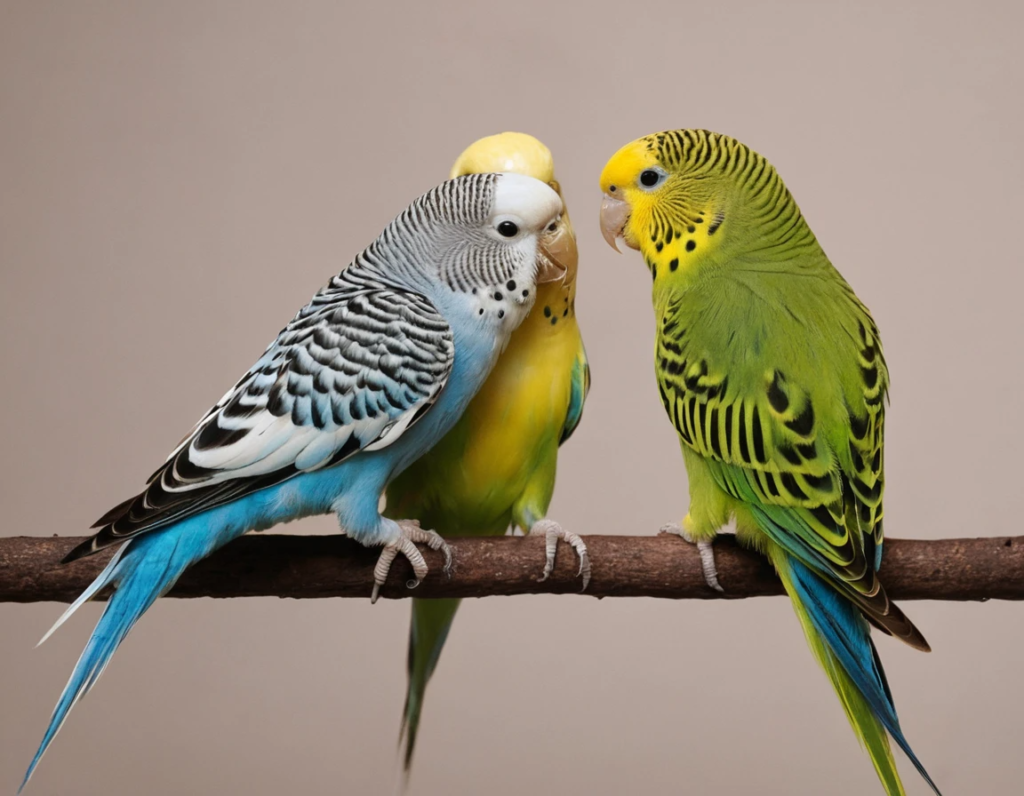
Parakeet vs. Budgie: Behavior, Care, and Personality Compared
If you’ve ever found yourself caught in the great parakeet vs. budgie debate, you’re not alone. Some people insist they’re different birds, while others claim they’re the same. The truth? A budgie is a type of parakeet, but not all parakeets are budgies. Confusing? Don’t worry—we’ll break it all down for you, with a little humor to keep things chirpy!
Behavior: Social Butterflies or Independent Thinkers?
When it comes to parakeet vs. budgie behavior, budgies are the ultimate extroverts. These little chatterboxes love company, whether it’s their human, a fellow budgie, or even their own reflection in a mirror (yes, they’re a little vain).
Other parakeet species, like the Indian Ringneck or Monk Parakeet, can be more independent and even a bit moody at times. Some parakeets prefer forming strong bonds with their human owners, while others enjoy hanging out with fellow birds more. Budgies, however, are generally friendly, playful, and eager to interact.
Care: High Maintenance or Easygoing?
Let’s be honest—no pet is truly “low maintenance” (except maybe a pet rock). But in the parakeet vs. budgie showdown, budgies are relatively easy to care for.
They need:
- A spacious cage with horizontal bars for climbing.
- A varied diet of seeds, pellets, fruits, and veggies.
- Toys! Lots and lots of toys to keep their curious minds busy.
- Social interaction—ignore your budgie, and you might get the cold shoulder.
Other parakeet species, especially the larger ones, often need more space, specialized diets, and extra training to keep their big brains occupied. So if you’re new to bird ownership, a budgie might be the best starter bird for you.
Personality: Feathered Comedians or Serious Thinkers?
Budgies are the class clowns of the bird world. They’re playful, energetic, and can even learn to talk! Some budgies have been known to develop a vocabulary of over 100 words. Plus, they love showing off with little tricks and goofy antics.
Other parakeets can have more varied personalities. Indian Ringnecks, for example, are incredibly intelligent but can be a bit sassy (think of them as the divas of the parakeet family). Monk Parakeets are known for their strong nesting instincts and can sometimes be territorial.
Final Verdict: Which One is Right for You?
If you’re looking for a small, social, and entertaining pet, a budgie is an excellent choice. They’re easy to care for, love attention, and can keep you laughing with their silly antics.
If you have more space, time, and experience, you might enjoy one of the larger parakeet species. Just be prepared for a bit more noise, a bigger mess, and possibly an attitude that rivals a reality TV star.
In the end, the parakeet vs. budgie debate is really about terminology. A budgie is a parakeet, but if you’re in the market for a pet bird, make sure you choose the species that best fits your lifestyle. Either way, you’re in for a fun, feathered friendship!
Are Budgies and Parakeets the Same Bird? The Truth About Their Names
If you’ve ever walked into a pet store and heard someone ask for a parakeet while another person insists on calling it a budgie, you might have wondered—what’s the difference? Well, let’s settle the parakeet vs. budgie debate once and for all!
The Short Answer: Yes, They’re the Same Bird
That’s right! Budgies (short for budgerigars) and parakeets are actually the same bird. The main difference lies in the name itself. The term “parakeet” is a broad term used to describe a variety of small, long-tailed parrots. “Budgie,” on the other hand, refers specifically to the little, chattering green-and-yellow bird we all know and love.
Where Did the Name Differences Come From?
The reason for the parakeet vs. budgie confusion is mostly regional. In the United States, these birds are commonly called parakeets, while in the UK, Australia, and many other parts of the world, they go by the name budgies.
It’s kind of like how Americans call it “soda,” while the British say “fizzy drink.” Either way, it’s the same thing (but let’s be real, soda sounds way cooler).
Are All Parakeets Budgies?
Nope! All budgies are parakeets, but not all parakeets are budgies. Think of it like this: all golden retrievers are dogs, but not all dogs are golden retrievers. Parakeets come in many varieties, including:
- Indian Ringneck Parakeet – Known for their striking colors and impressive talking skills.
- Monk Parakeet (Quaker Parrot) – Small but feisty, and they love to build nests.
- Alexandrine Parakeet – Larger and more independent but still playful.
Budgies, however, remain the most popular type of parakeet kept as pets, thanks to their playful nature, small size, and ability to learn words.
Does It Matter What You Call Them?
Not really! Whether you say “parakeet” or “budgie,” your feathery friend will still chirp happily and demand attention. The important thing is understanding their needs, including proper diet, social interaction, and lots of toys (because a bored budgie is a destructive budgie).
So, next time you hear someone debating parakeet vs. budgie, you can confidently say, “Same bird, different name!” And then impress them with your newfound bird knowledge.
Or, you know, just go home and chat with your budgie about how humans overcomplicate everything!
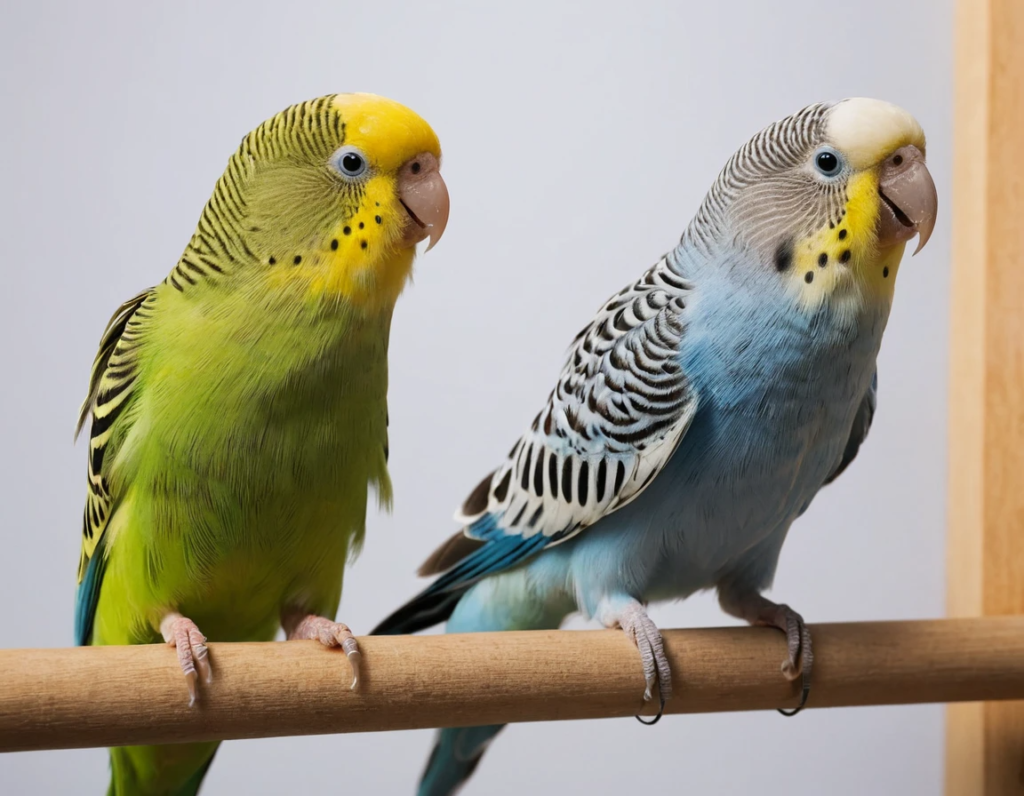
Parakeet vs. Budgie: Lifespan, Size, and Talking Ability
The parakeet vs. budgie debate has confused bird lovers for ages. Are they the same? Different? Some kind of feathery cousins? Well, let’s clear things up and dive into their lifespan, size, and talking ability—because knowing these details will make you the most knowledgeable bird parent on the block!
Lifespan: How Long Do They Stick Around?
Budgies (a.k.a. parakeets) typically live 5 to 10 years in captivity, though some lucky little birds can reach 15 with excellent care. The biggest factors affecting their lifespan are diet, exercise, and whether they receive enough love and attention (because yes, your bird does expect you to be a full-time entertainer).
Other types of parakeets, like the Indian Ringneck or Alexandrine, can live even longer—sometimes 20 to 30 years! So, if you’re looking for a long-term commitment, be prepared for decades of chirping, head bobbing, and occasional sass.
Size: How Big Are We Talking?
In the parakeet vs. budgie showdown, size is another key difference—except, well, not really. Budgies are one of the smallest parakeet species, usually measuring around 7 inches (18 cm) from beak to tail.
Other parakeets, however, can be significantly bigger. Indian Ringnecks, for example, average 16 inches (40 cm), while Alexandrine parakeets can grow up to 24 inches (60 cm). If you want a parakeet that fits in the palm of your hand, a budgie is the way to go. If you want a parakeet that might demand its own room, maybe consider a larger species!
Talking Ability: Can They Say More Than Just “Pretty Bird”?
Here’s where things get exciting. Budgies are surprisingly good talkers, and some can learn over 100 words! In fact, they hold records for the most words spoken by a bird. They might be small, but they make up for it with their chatterbox tendencies.
Other parakeets, like Indian Ringnecks, are also excellent talkers but often have a clearer and more robotic-sounding voice. Budgies, on the other hand, tend to sound like tiny, excited aliens trying their best to mimic human speech. (Which, let’s be honest, is adorable.)
Final Verdict: Which One Is Right for You?
If you’re looking for a small, friendly, and talkative companion, a budgie is the perfect choice. They’re easy to care for, love social interaction, and won’t take up too much space.
If you want a parakeet with a longer lifespan, larger size, and a more distinct voice, you might prefer an Indian Ringneck or another bigger parakeet. But keep in mind—they require more space, training, and patience!
Either way, the parakeet vs. budgie debate is really just a matter of terminology. A budgie is a type of parakeet, but when most people say “parakeet,” they could be talking about several different species. Whatever you choose, you’re in for years of feathery fun, chirps, and the occasional surprise conversation with your bird!
Budgie vs. Parakeet: Which One Is Better for Beginners?
If you’re thinking about getting a pet bird, you might have found yourself tangled in the parakeet vs. budgie debate. Are they the same? Are they different? And most importantly, which one is the best choice for a beginner? Let’s break it down and make your decision a little easier (and more fun)!
First Things First: Are Budgies and Parakeets Different?
Short answer: No. Long answer: Still no, but let’s explain why. Budgies (short for budgerigars) are parakeets. They are just one specific type of parakeet, but in places like the U.S., people often use “parakeet” to refer only to budgies. Meanwhile, in Australia and the U.K., they stick with calling them budgies. So really, this isn’t a parakeet vs. budgie competition—it’s just a name difference!
Why Budgies (A.K.A. Parakeets) Are Great for Beginners
If you’re new to bird ownership, budgies are one of the best starter birds you could ask for. Here’s why:
1. They’re Small and Manageable
Budgies are tiny, usually around 7 inches long, which makes them easy to handle. Unlike larger parakeets (like Indian Ringnecks or Alexandrines), they don’t need an enormous cage or an entire room to themselves.
2. They’re Affordable
Compared to other parrot species, budgies are budget-friendly. The initial setup—including a cage, food, and toys—is relatively cheap, and their ongoing care won’t drain your wallet either.
3. They Can Learn to Talk
One of the coolest things about budgies? They’re amazing mimics! Some can learn over 100 words—though be warned, their voices sound like tiny, excited robots. If you want a talking bird but aren’t ready for the commitment of a bigger parrot, a budgie is a great choice.
4. They’re Playful and Social
Budgies are high-energy, playful birds that love interacting with their humans. They enjoy toys, mirrors, and even watching TV with you (though they may have their own opinions on your show choices).
5. They’re Easier to Care For Than Larger Parakeets
While all birds require attention, budgies are relatively low maintenance compared to larger parakeets. Bigger birds need more space, specialized diets, and more training to prevent behavioral issues. A budgie, on the other hand, just needs love, good food, and a few fun activities.
Should You Get One Budgie or Two?
If you’re away from home a lot, you might consider getting two budgies. They’re social birds, and a single budgie can get lonely. However, if you want a bird that bonds more with you, a solo budgie might be the way to go—just be ready to provide lots of interaction!
Final Verdict: The Best Beginner Bird
Since budgies are parakeets, the parakeet vs. budgie debate is a bit misleading. However, if you’re wondering whether budgies (a.k.a. the small parakeets) are a good choice for beginners, the answer is a big YES. They’re small, friendly, smart, and won’t overwhelm first-time bird owners.
So, if you’re ready for a chatty, feathered friend who might just learn to greet you every morning, a budgie is the perfect choice!
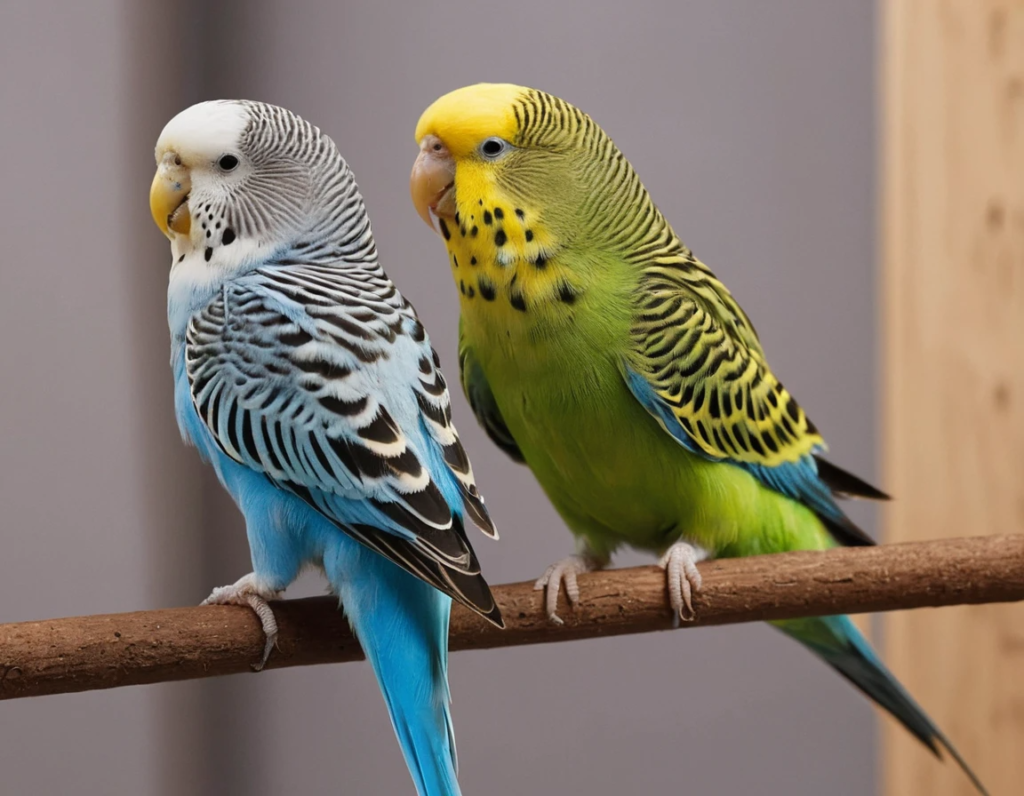
Parakeet vs. Budgie: Which Is More Friendly and Easy to Train?
The parakeet vs. budgie debate has left many bird lovers scratching their heads. Are they different birds? Which one is friendlier? And most importantly, which one is easier to train? Well, get ready to have your mind blown—because budgies are parakeets! That’s right, budgies are just one type of parakeet. But does that make them the best choice for taming and training? Let’s find out!
Friendliness: Which One Loves You More?
Since budgies and parakeets are basically the same, friendliness depends more on the individual bird and how it’s raised rather than the species itself. However, budgies (the smaller parakeet variety) are known to be extremely social and affectionate—once they trust you, of course!
Why Budgies Are Friendly:
- They love attention and interaction.
- They enjoy being around humans and can form strong bonds.
- They can be tamed with patience and gentle handling.
Other types of parakeets, like Indian Ringnecks, are also friendly but often require more effort to tame. They tend to have a more independent streak and may take longer to warm up to humans. If you’re looking for a feathery friend who’s quick to bond, a budgie is a solid choice!
Training: Which One Learns Tricks Faster?
If you’re hoping to teach your bird to step up, talk, or do tricks, you’ll want one that’s easy to train. Lucky for you, budgies are some of the best talkers in the bird world! They might be small, but they can learn over 100 words and even mimic sounds like a tiny feathery robot.
Why Budgies Are Easy to Train:
- They are naturally curious and eager to interact.
- They can quickly learn words and simple tricks.
- They love food rewards, making positive reinforcement training a breeze.
Larger parakeet species, like Quakers or Ringnecks, can also be trained but might require more patience and consistency. Some larger parakeets are known to have mood swings and need more time to build trust before they start learning tricks.
The Verdict: Which One Is Best for Beginners?
Since budgies are parakeets, the parakeet vs. budgie debate is mostly about size and personality. If you want a small, friendly, and easy-to-train bird, a budgie is the clear winner. They love attention, they’re quick learners, and they don’t need as much space as larger parakeets.
However, if you’re looking for a bigger bird with a longer lifespan and more advanced talking skills, a larger parakeet might be a better fit—but be prepared for a longer training process.
So, if you’re after a lovable little chatterbox that can sit on your finger and say funny things, a budgie is definitely the way to go!
Parakeet or Budgie? Understanding the Confusion Between These Birds
If you’ve ever found yourself in the middle of a parakeet vs. budgie debate, don’t worry—you’re not alone. It’s one of the great mysteries of the bird world, right up there with “Why does my bird scream at 6 AM?” and “Can they actually understand what they’re saying?” So, what’s the truth? Are parakeets and budgies the same, or are we talking about two different birds? Let’s clear up the confusion once and for all!
What’s the Difference Between a Parakeet and a Budgie?
Spoiler alert: There isn’t one! Yep, that’s right—budgies are parakeets. The term “parakeet” is a broad category that includes many different small, long-tailed parrots, and budgerigars (or budgies) are just one type of parakeet. Think of it like this: all budgies are parakeets, but not all parakeets are budgies.
Why the Name Confusion?
The mix-up comes from regional differences. In places like the United States, people commonly call them “parakeets,” while in the UK and Australia, they’re called “budgies.” So if you walk into a pet store in New York, you’ll see cages labeled “parakeets.” But if you’re in London, you’ll find the exact same bird labeled as a “budgie.” It’s the same feathery friend, just with a different name!
Are Other Parakeets Different from Budgies?
Yes! While budgies are the most popular parakeets, there are many other types, such as:
- Indian Ringneck Parakeets – Larger and known for their talking ability.
- Monk Parakeets (Quaker Parrots) – Highly social and love to build nests.
- Alexandrine Parakeets – Bigger and more independent.
Compared to these, budgies are the smallest and most beginner-friendly, which is why they’re often the first choice for new bird owners.
So, Should You Say “Parakeet” or “Budgie”?
That depends on where you are! If you’re in the U.S., calling them “parakeets” is totally fine. If you’re talking to a Brit or an Aussie, “budgie” will sound more natural. But now that you know the truth, you can confidently join any parakeet vs. budgie debate and drop some knowledge!
Final Thoughts
No matter what you call them, budgies (or parakeets) are amazing little birds. They’re fun, talkative, and full of personality. So, whether you walk into a pet shop asking for a parakeet or a budgie, just know—you’re getting the same adorable feathery companion!

FAQs about Parakeet vs. Budgie to clear up any confusion:
1. Is a budgie the same as a parakeet?
Answer: Yes! Budgies are a type of parakeet. All budgies are parakeets, but not all parakeets are budgies.
2. Why do some people say “parakeet” and others say “budgie”?
Answer: It’s a regional difference. In the U.S., they’re called parakeets, while in the UK and Australia, they’re called budgies.
3. Are budgies smaller than other parakeets?
Answer: Yes! Budgies are one of the smallest parakeet species. Other parakeets, like Indian Ringnecks, are much larger.
4. Do budgies and parakeets have different personalities?
Answer: Budgies are generally friendly, playful, and easy to tame. Other parakeets may be more independent and need extra training.
5. Which one is better for beginners: a budgie or another parakeet?
Answer: Budgies are usually the best choice for beginners because they are easy to care for and train.
6. Can both budgies and other parakeets talk?
Answer: Yes! Budgies are actually some of the best talkers among pet birds. Other parakeets, like Ringnecks, can also learn words but may need more training.
7. Which bird is more affectionate?
Answer: Budgies are very affectionate once tamed. Some larger parakeets can be cuddly too, but they may take longer to warm up to humans.
8. Is there a difference in lifespan between budgies and other parakeets?
Answer: Budgies live around 5–10 years, while larger parakeets can live 20+ years with proper care.
9. Do budgies need different care compared to other parakeets?
Answer: The basics are the same—proper diet, social interaction, and enrichment—but larger parakeets may need more space and attention.
10. Are budgies more social than other parakeets?
Answer: Budgies love being around people and other birds, while some larger parakeets can be more independent.
11. Which one is noisier?
Answer: Budgies chirp a lot but aren’t too loud. Larger parakeets tend to have louder, more piercing calls.
12. Do budgies and other parakeets need different cage sizes?
Answer: Budgies need at least 18×18 inches, but bigger is better. Larger parakeets need much bigger cages to stay happy.
13. Which one is easier to tame?
Answer: Budgies are usually easier to tame, especially if you start young. Larger parakeets may take longer to trust humans.
14. Are budgies more playful than other parakeets?
Answer: Budgies are known for their playful nature, but all parakeets love toys and social interaction.
15. Can budgies live with other parakeets?
Answer: It depends. Budgies get along well with their own kind but may not mix well with larger parakeets due to size differences.
16. Do budgies eat the same food as other parakeets?
Answer: Yes! A balanced diet of seeds, pellets, fresh fruits, and vegetables is essential for both.
17. Which one is more expensive?
Answer: Budgies are typically cheaper ($20–$50), while larger parakeets can cost hundreds of dollars.
18. Are budgies easier to train compared to other parakeets?
Answer: Yes! Budgies pick up tricks and words quickly, while some larger parakeets may take more time and patience.
19. Can budgies and larger parakeets live together?
Answer: It’s risky. Larger parakeets might accidentally hurt budgies due to their size difference.
20. Which one should I get: a budgie or another parakeet?
Answer: If you want a small, friendly, easy-to-train bird, go for a budgie. If you’re looking for a bigger bird with a longer lifespan, a larger parakeet might be better.

